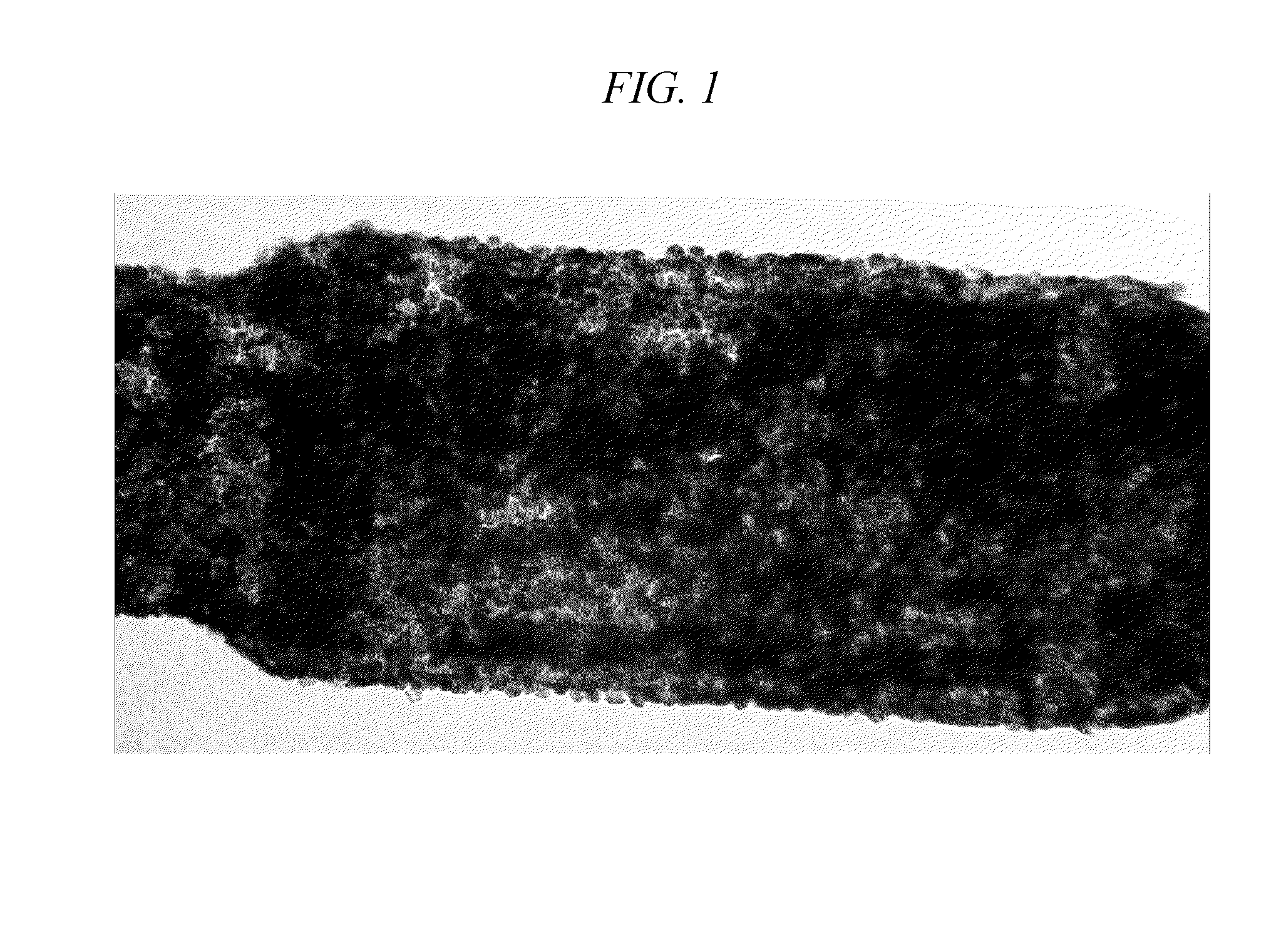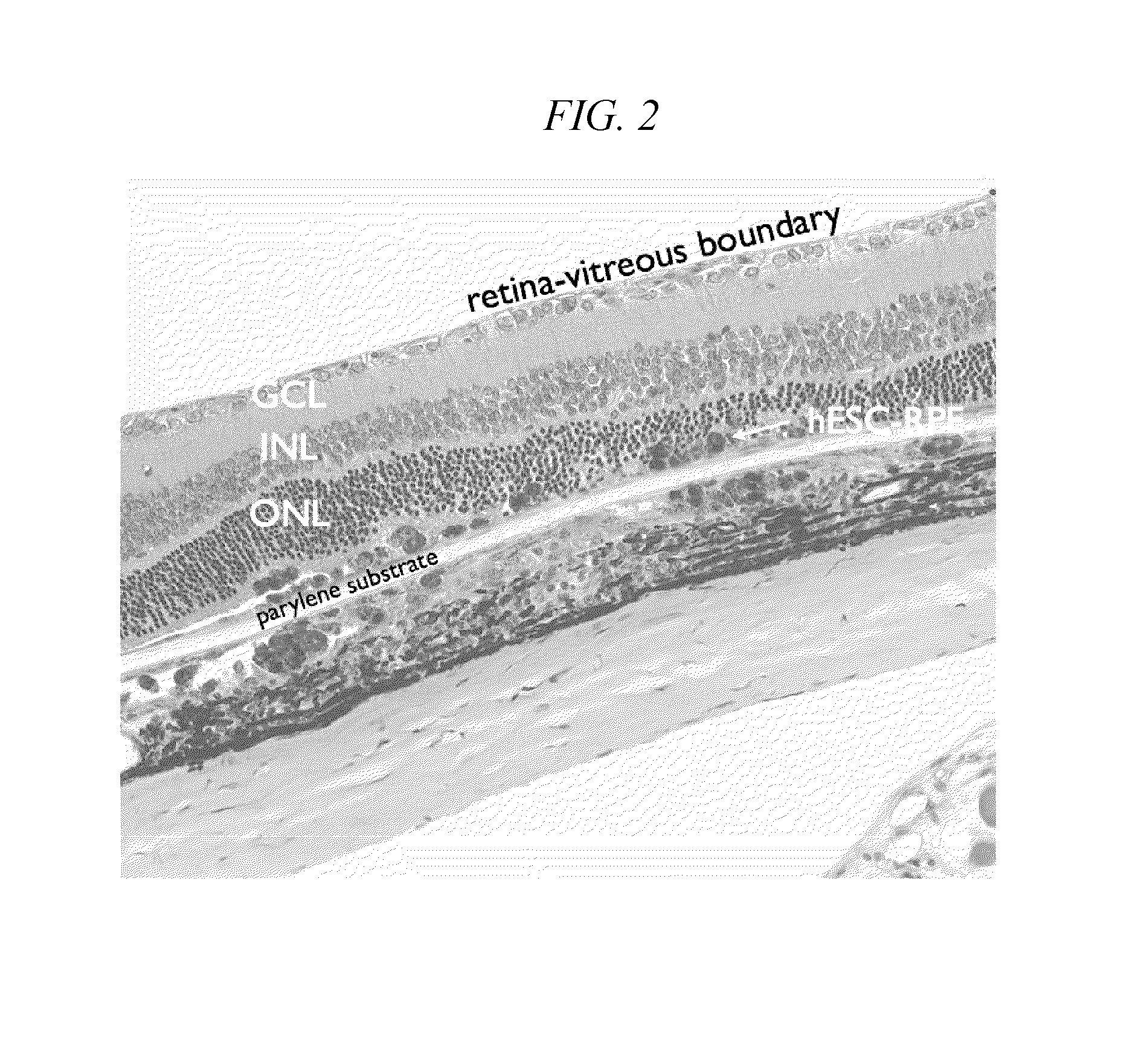Method of cryopreservation of stem cell-derived retinal pigment epithelial cells on polymeric substrate
a technology of stem cells and epithelial cells, which is applied in the field of cryopreservation of stem cells grown on a polymeric substrate, can solve the problems of loss of vision in the center of the visual field, affecting the function of the macula, and compromitting or completely eliminating the individual's ability to perceive visual images, etc., to achieve the effect of improving the storage and long-term storage of cell-containing compositions
- Summary
- Abstract
- Description
- Claims
- Application Information
AI Technical Summary
Benefits of technology
Problems solved by technology
Method used
Image
Examples
example 1
[0047]Two hours prior to disassociation from a culture vessel, the culture medium of stock H9-RPE cells was changed to fresh X-VIVO 10 medium. The differentiated H9-RPE cells were then washed with calcium-free and magnesium-free DPBS (Mediatech, Inc., VA), pH7.4, once and dissociated with 0.05% trypsin with 0.53 mM EDTA (Mediatech, Inc., VA) for 5 minutes at 37° C. The cells were then thoroughly dissociated by pumping the trypsin-EDTA solution up and down gently over the cells with a pipette (culture plate or dishes) or by transferring the cells by pipette to a culture flask. The trypsin was then neutralized with equal volume of X-VIVO 10 medium (Lozan) containing 10% FBS (Hyclone or other xeno-free neutralization reagents). The cell suspensions were filtered through a sterile 40 μm strainer to remove non-disassociated cells and the disassociated cells were pelleted with a Hirmle Z 300 centrifuge (RPI Corp., IL) and centrifuged at 1000 rpm for 5 minutes.
[0048]The cell pellets were t...
PUM
| Property | Measurement | Unit |
|---|---|---|
| temperature | aaaaa | aaaaa |
| temperature | aaaaa | aaaaa |
| time | aaaaa | aaaaa |
Abstract
Description
Claims
Application Information
 Login to View More
Login to View More - R&D
- Intellectual Property
- Life Sciences
- Materials
- Tech Scout
- Unparalleled Data Quality
- Higher Quality Content
- 60% Fewer Hallucinations
Browse by: Latest US Patents, China's latest patents, Technical Efficacy Thesaurus, Application Domain, Technology Topic, Popular Technical Reports.
© 2025 PatSnap. All rights reserved.Legal|Privacy policy|Modern Slavery Act Transparency Statement|Sitemap|About US| Contact US: help@patsnap.com



